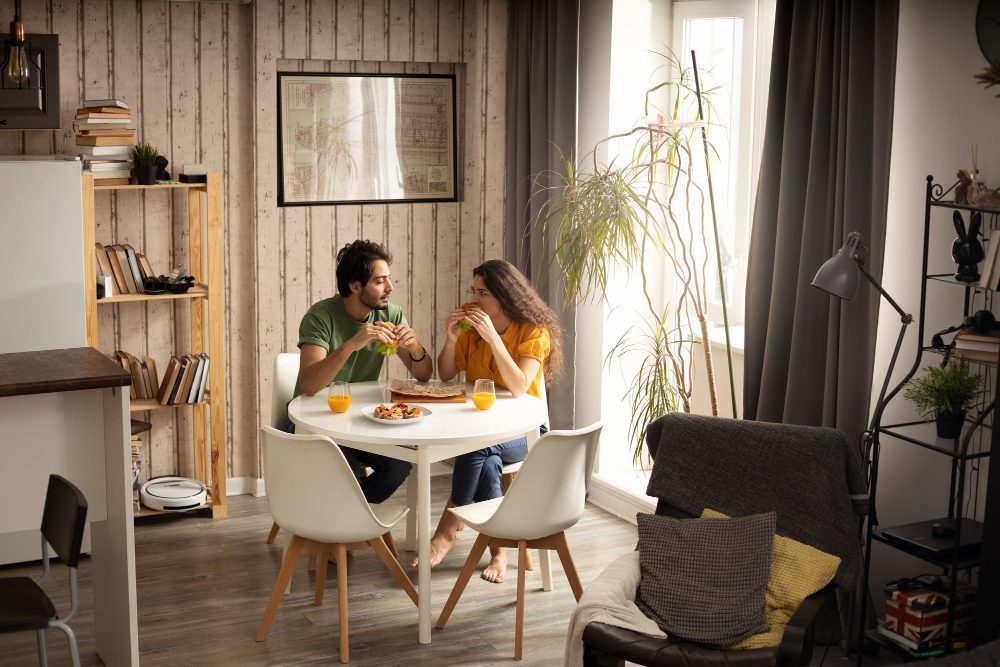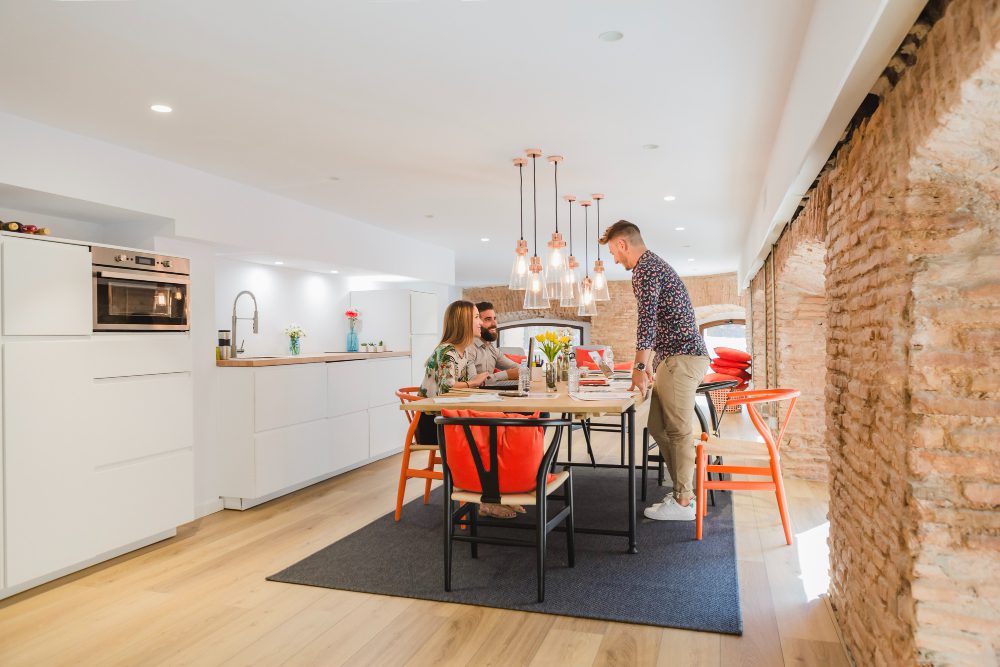DIY vs. Professional
When to Splurge & When to Save: House Planning
By Deepa Saxena, Principal Architect at Mdeepa Architects

Interior design transforms houses into homes, reflecting personalities while ensuring
functionality and comfort. As an architect who has worked extensively with interior design in
Hyderabad, I’ve observed that the line between DIY and professional involvement is more
nuanced in interiors than in architectural planning. Unlike structural work where mistakes can be
dangerous, interior design offers numerous opportunities for homeowner creativity while still
benefiting from professional expertise in key areas.
The interior design landscape in Hyderabad has evolved dramatically over the past decade.
From traditional Deccan architectural influences to contemporary minimalism, today’s
homeowners have access to unprecedented design resources and products. However, this
abundance of choices can be overwhelming, making the decision of when to DIY and when to
hire professionals even more crucial.
Understanding the Interior Design Investment Spectrum
Interior design projects exist on a spectrum from simple decorative updates to comprehensive
space transformations. Understanding where your project falls on this spectrum helps determine
the appropriate level of professional involvement and budget allocation.
High-Impact Professional Investment Areas
Space Planning and Layout Optimization
Professional interior design in Hyderabad becomes invaluable when dealing with:
● Functional space planning: Optimizing room layouts for traffic flow, furniture placement, and multi-functional use. In Hyderabad’s often compact urban homes, every square foot matters. Professional designers understand anthropometric data and can maximize usability while maintaining aesthetic appeal.
● Storage solutions: Custom storage design requires understanding of both spatial constraints and organizational psychology. Professional designers can create solutions that are both beautiful and highly functional, particularly important in Hyderabad homes where storage is often at a premium.
● Lighting design: Proper lighting layers – ambient, task, and accent – require technical knowledge of fixtures, placement, and electrical requirements. Hyderabad’s intense sunlight and long power cuts make strategic lighting design particularly crucial.
● Functional space planning: Optimizing room layouts for traffic flow, furniture placement, and multi-functional use. In Hyderabad’s often compact urban homes, every square foot matters. Professional designers understand anthropometric data and can maximize usability while maintaining aesthetic appeal.
● Storage solutions: Custom storage design requires understanding of both spatial constraints and organizational psychology. Professional designers can create solutions that are both beautiful and highly functional, particularly important in Hyderabad homes where storage is often at a premium.
● Lighting design: Proper lighting layers – ambient, task, and accent – require technical knowledge of fixtures, placement, and electrical requirements. Hyderabad’s intense sunlight and long power cuts make strategic lighting design particularly crucial.
Technical and Coordination-Heavy Elements
Areas where professional expertise provides clear value:
● Kitchen design: Kitchen planning involves complex coordination of plumbing, electrical, ventilation, and storage. Professional interior design in Hyderabad considers local cooking habits, climate considerations (humidity and heat), and maintenance requirements of different materials.
● Bathroom design: Beyond aesthetics, bathroom design involves waterproofing, ventilation, fixture selection, and accessibility planning. Hyderabad’s water quality and monsoon conditions require specific material and design considerations.
● Built-in furniture and millwork: Custom cabinetry, entertainment centers, and built-in storage require precise measurements, material knowledge, and coordination with contractors. Professional designers ensure these elements integrate seamlessly with architectural features.
● Window treatments and climate control: Hyderabad’s climate demands thoughtful approach to solar heat gain, privacy, and monsoon protection. Professional designers understand how different treatments perform in local conditions.
● Kitchen design: Kitchen planning involves complex coordination of plumbing, electrical, ventilation, and storage. Professional interior design in Hyderabad considers local cooking habits, climate considerations (humidity and heat), and maintenance requirements of different materials.
● Bathroom design: Beyond aesthetics, bathroom design involves waterproofing, ventilation, fixture selection, and accessibility planning. Hyderabad’s water quality and monsoon conditions require specific material and design considerations.
● Built-in furniture and millwork: Custom cabinetry, entertainment centers, and built-in storage require precise measurements, material knowledge, and coordination with contractors. Professional designers ensure these elements integrate seamlessly with architectural features.
● Window treatments and climate control: Hyderabad’s climate demands thoughtful approach to solar heat gain, privacy, and monsoon protection. Professional designers understand how different treatments perform in local conditions.
Strategic DIY Opportunities in Interior Design
Decorative and Personal Elements
Areas where homeowner involvement adds both value and personality:
● Color selection and paint: While professionals can provide guidance, homeowners often have strong preferences for colors that reflect their personalities. DIY painting can save significant costs while allowing for experimentation and seasonal changes.
● Artwork and accessories: Personal collections, family photographs, and decorative objects are inherently personal choices. Homeowners are best positioned to curate these elements, though professional guidance on placement and styling can enhance impact.
● Plants and greenery: Indoor plants and small garden areas allow for ongoing experimentation and seasonal variety. Hyderabad’s climate supports diverse indoor plant options, and this area offers excellent DIY opportunities.
● Textiles and soft furnishings: Cushions, throws, curtains, and rugs can be selected and changed by homeowners to refresh spaces seasonally or as tastes evolve.
● Color selection and paint: While professionals can provide guidance, homeowners often have strong preferences for colors that reflect their personalities. DIY painting can save significant costs while allowing for experimentation and seasonal changes.
● Artwork and accessories: Personal collections, family photographs, and decorative objects are inherently personal choices. Homeowners are best positioned to curate these elements, though professional guidance on placement and styling can enhance impact.
● Plants and greenery: Indoor plants and small garden areas allow for ongoing experimentation and seasonal variety. Hyderabad’s climate supports diverse indoor plant options, and this area offers excellent DIY opportunities.
● Textiles and soft furnishings: Cushions, throws, curtains, and rugs can be selected and changed by homeowners to refresh spaces seasonally or as tastes evolve.
Research and Sourcing
Homeowners can significantly contribute to interior design projects through:
● Market research: Exploring Hyderabad’s diverse furniture markets, from traditional crafts in Charminar area to contemporary showrooms in Banjara Hills, can help identify options within budget.
● Material sampling: Collecting samples of flooring, fabrics, and finishes helps visualize combinations and provides valuable input for design decisions.
● Vendor relationships: Building relationships with local craftsmen, particularly for traditional elements like handwoven textiles or custom metalwork, can provide both cost savings and unique design elements.
● Market research: Exploring Hyderabad’s diverse furniture markets, from traditional crafts in Charminar area to contemporary showrooms in Banjara Hills, can help identify options within budget.
● Material sampling: Collecting samples of flooring, fabrics, and finishes helps visualize combinations and provides valuable input for design decisions.
● Vendor relationships: Building relationships with local craftsmen, particularly for traditional elements like handwoven textiles or custom metalwork, can provide both cost savings and unique design elements.
The Economics of Interior Design Investment
Understanding the financial implications of DIY versus professional interior design in Hyderabad
requires considering both immediate costs and long-term value.
Where Professional Investment Pays Off
Avoiding Costly Mistakes
Professional interior designers help avoid expensive errors:
● Scale and proportion mistakes: Furniture and fixtures that are inappropriately sized for spaces require costly replacement. Professionals understand spatial relationships and can prevent these errors.
● Material selection errors: Choosing materials unsuitable for Hyderabad’s climate or specific room functions leads to premature replacement costs. Professional knowledge of local conditions and material performance saves money long-term.
● Electrical and lighting errors: Inadequate or improperly placed lighting requires expensive retrofitting. Professional lighting design considers both current needs and future flexibility.
● Scale and proportion mistakes: Furniture and fixtures that are inappropriately sized for spaces require costly replacement. Professionals understand spatial relationships and can prevent these errors.
● Material selection errors: Choosing materials unsuitable for Hyderabad’s climate or specific room functions leads to premature replacement costs. Professional knowledge of local conditions and material performance saves money long-term.
● Electrical and lighting errors: Inadequate or improperly placed lighting requires expensive retrofitting. Professional lighting design considers both current needs and future flexibility.
Time Value and Project Management
Professional designers provide:
● Vendor coordination: Managing multiple contractors, suppliers, and timelines requires significant time investment. Professionals leverage existing relationships and experience to manage projects efficiently.
● Problem-solving expertise: When unexpected issues arise, professionals can quickly develop solutions based on experience with similar challenges.
● Quality control: Professional oversight ensures work meets standards and design intent, preventing costly corrections and ensuring longevity.
● Vendor coordination: Managing multiple contractors, suppliers, and timelines requires significant time investment. Professionals leverage existing relationships and experience to manage projects efficiently.
● Problem-solving expertise: When unexpected issues arise, professionals can quickly develop solutions based on experience with similar challenges.
● Quality control: Professional oversight ensures work meets standards and design intent, preventing costly corrections and ensuring longevity.
Maximizing DIY Value
Preparation and Planning
Homeowners can add significant value through:
● Detailed documentation: Measuring spaces, photographing existing conditions, and documenting preferences provides valuable input that reduces professional design time.
● Budget research: Understanding costs of different options helps make informed decisions about where to allocate professional fees versus DIY efforts.
● Lifestyle analysis: Documenting how you actually use spaces, storage needs, and daily routines provides insights that inform better design decisions.
● Detailed documentation: Measuring spaces, photographing existing conditions, and documenting preferences provides valuable input that reduces professional design time.
● Budget research: Understanding costs of different options helps make informed decisions about where to allocate professional fees versus DIY efforts.
● Lifestyle analysis: Documenting how you actually use spaces, storage needs, and daily routines provides insights that inform better design decisions.
Implementation Participation
Strategic DIY participation during implementation:
● Project oversight: Regular site visits to monitor progress and quality can supplement professional oversight while ensuring your interests are represented.
● Finish work: Installing hardware, arranging furniture, and styling accessories can be handled by homeowners with professional guidance on placement and composition.
● Project oversight: Regular site visits to monitor progress and quality can supplement professional oversight while ensuring your interests are represented.
● Finish work: Installing hardware, arranging furniture, and styling accessories can be handled by homeowners with professional guidance on placement and composition.
Climate-Specific Considerations for Hyderabad Interiors
Hyderabad’s climate presents unique challenges and opportunities for interior design that
influence the DIY versus professional decision.
Professional Expertise for Climate Response
Material Selection
Interior design in Hyderabad requires understanding of how materials perform in:
● High humidity: Monsoon seasons create conditions that can damage inappropriate materials or finishes
● Intense heat: Summer temperatures affect comfort and material expansion/contraction
● Dust conditions: Year-round dust requires consideration in fabric choices, window treatments, and maintenance accessibility
● High humidity: Monsoon seasons create conditions that can damage inappropriate materials or finishes
● Intense heat: Summer temperatures affect comfort and material expansion/contraction
● Dust conditions: Year-round dust requires consideration in fabric choices, window treatments, and maintenance accessibility
Ventilation and Comfort
Professional designers understand:
● Cross-ventilation principles: Optimizing airflow through strategic placement of openings and furniture
● Thermal comfort: Using materials, colors, and layouts that maintain comfort while minimizing energy consumption
● Integration with HVAC: Ensuring interior design decisions support rather than hinder mechanical systems
● Cross-ventilation principles: Optimizing airflow through strategic placement of openings and furniture
● Thermal comfort: Using materials, colors, and layouts that maintain comfort while minimizing energy consumption
● Integration with HVAC: Ensuring interior design decisions support rather than hinder mechanical systems
DIY Opportunities in Climate Adaptation
Seasonal Flexibility
Homeowners can adapt interiors seasonally through:
● Textile rotation: Changing fabrics and colors to reflect seasonal comfort needs
● Furniture arrangement: Adjusting layouts to optimize comfort during different seasons
● Plant selection: Choosing indoor plants that provide air purification and humidity control
● Textile rotation: Changing fabrics and colors to reflect seasonal comfort needs
● Furniture arrangement: Adjusting layouts to optimize comfort during different seasons
● Plant selection: Choosing indoor plants that provide air purification and humidity control
Technology Integration in Modern Interior Design
The integration of technology in interior design presents both opportunities and challenges for
DIY versus professional approaches.
Professional Technology Integration
Smart Home Systems
Complex systems requiring professional coordination:
● Automated lighting and climate control: Integration with architectural systems requires technical expertise
● Audio-visual systems: Proper placement, wiring, and acoustic considerations need professional planning
● Security systems: Integration with interior design while maintaining aesthetics and functionality
● Automated lighting and climate control: Integration with architectural systems requires technical expertise
● Audio-visual systems: Proper placement, wiring, and acoustic considerations need professional planning
● Security systems: Integration with interior design while maintaining aesthetics and functionality
DIY Technology Opportunities
Personal Devices and Upgrades
Areas suitable for homeowner involvement:
● Portable smart devices: Adding smart speakers, displays, and controllers can be done without professional intervention
● Lighting upgrades: Replacing fixtures with smart bulbs or switches offers DIY upgrade opportunities
● Entertainment setup: Arranging and connecting personal entertainment equipment
● Portable smart devices: Adding smart speakers, displays, and controllers can be done without professional intervention
● Lighting upgrades: Replacing fixtures with smart bulbs or switches offers DIY upgrade opportunities
● Entertainment setup: Arranging and connecting personal entertainment equipment
Cultural Sensitivity in Hyderabad Interior Design
Hyderabad’s rich cultural heritage influences interior design decisions and affects the
professional versus DIY balance.
Professional Cultural Integration
Traditional Elements
Professional interior design in Hyderabad can effectively integrate:
● Architectural heritage: Understanding how to incorporate traditional elements like carved woodwork, metalwork, or stone elements
● Cultural functionality: Designing spaces that accommodate traditional practices, religious observances, and extended family gatherings
● Contemporary interpretation: Translating traditional motifs and materials into contemporary contexts
● Architectural heritage: Understanding how to incorporate traditional elements like carved woodwork, metalwork, or stone elements
● Cultural functionality: Designing spaces that accommodate traditional practices, religious observances, and extended family gatherings
● Contemporary interpretation: Translating traditional motifs and materials into contemporary contexts
DIY Cultural Expression
Personal Heritage Elements
Homeowners are best positioned to:
● Family heirlooms: Integrating inherited furniture, artwork, and decorative objects
● Religious and cultural displays: Arranging spaces for prayer, meditation, or cultural celebrations
● Personal collections: Displaying items that reflect individual interests and heritage
● Family heirlooms: Integrating inherited furniture, artwork, and decorative objects
● Religious and cultural displays: Arranging spaces for prayer, meditation, or cultural celebrations
● Personal collections: Displaying items that reflect individual interests and heritage
The Collaborative Approach: Maximizing Both
Professional and DIY Value
The most successful interior design projects combine professional expertise with meaningful
homeowner involvement.
Phase-Based Collaboration
Phase 1: Professional Foundation (High Investment Priority)
● Space planning and layout optimization
● Technical systems integration (lighting, HVAC, plumbing)
● Major built-in elements and custom millwork
● Material selection for high-impact, permanent elements
● Technical systems integration (lighting, HVAC, plumbing)
● Major built-in elements and custom millwork
● Material selection for high-impact, permanent elements
Phase 2: Guided DIY Implementation (Moderate Investment)
● Furniture selection with professional guidance
● Color and finish selection with expert input
● Sourcing and procurement with professional recommendations
● Styling and arrangement with periodic professional consultation
● Color and finish selection with expert input
● Sourcing and procurement with professional recommendations
● Styling and arrangement with periodic professional consultation
Phase 3: Ongoing DIY Refinement (Low Professional Investment)
● Seasonal decorative changes
● Accessory updates and personal collections
● Plant selection and care
● Minor furniture rearrangement and refresh
● Accessory updates and personal collections
● Plant selection and care
● Minor furniture rearrangement and refresh
Making Smart Investment Decisions
Project Assessment Framework
When deciding between DIY and professional involvement in interior design, consider:
Complexity Level
● Simple decorative updates favor DIY approaches
● Major space reconfigurations require professional expertise
● Technical integrations need professional coordination
● Major space reconfigurations require professional expertise
● Technical integrations need professional coordination
Risk Tolerance
● High-stakes areas (kitchens, bathrooms) benefit from professional involvement
● Low-risk decorative elements allow for DIY experimentation
● Irreversible decisions (built-ins, permanent finishes) warrant professional input
● Low-risk decorative elements allow for DIY experimentation
● Irreversible decisions (built-ins, permanent finishes) warrant professional input
Time and Skill Assessment
● Honest evaluation of available time and relevant skills
● Consideration of learning curve for new techniques or tools
● Assessment of project management capabilities
● Consideration of learning curve for new techniques or tools
● Assessment of project management capabilities
Budget Optimization Strategies
80/20 Rule Application Invest 80% of professional fees in areas with highest impact:
● Space planning and layout
● Major fixed elements (kitchens, bathrooms, built-ins)
● Technical systems and coordination
● Major fixed elements (kitchens, bathrooms, built-ins)
● Technical systems and coordination
Reserve 20% for areas where DIY involvement adds personal value:
● Decorative elements and styling
● Seasonal updates and changes
● Personal collections and artwork placement
● Seasonal updates and changes
● Personal collections and artwork placement
Conclusion: Creating Homes That Reflect Both Expertise
and Personality
The decision between DIY and professional involvement in interior design isn’t about choosing
one approach over another—it’s about strategically combining both to create spaces that are
technically excellent, aesthetically pleasing, and deeply personal.
Interior design in Hyderabad offers unique opportunities to blend professional expertise with
personal expression. The city’s rich cultural heritage, diverse material resources, and climate
considerations create a context where both professional knowledge and personal involvement
contribute essential value.
Successful interior design projects recognize that professionals bring technical expertise, design
principles, and project management skills that ensure functionality, durability, and aesthetic
coherence. Simultaneously, homeowners contribute irreplaceable insights about lifestyle needs,
personal preferences, and cultural values that make spaces truly feel like home.
The key is identifying where each approach provides maximum value and creating a
collaborative process that leverages both professional expertise and personal involvement
effectively. By investing professionally in high-impact, technical, or irreversible elements while
maintaining DIY involvement in personal, decorative, and flexible areas, you can create interiors
that are both expertly crafted and authentically yours.
At Mdeepa Architects, we’ve found that the most successful interior design projects emerge
from partnerships where professional expertise enables and enhances homeowner vision rather
than replacing it. This collaborative approach results in interiors that not only function beautifully
but also reflect the unique personalities and lifestyles of the families who call them home.
Transform your space with the perfect balance of professional expertise and personal style.
Contact Mdeepa Architects to explore how our interior design services in Hyderabad can help
you create a home that’s both expertly designed and uniquely yours. For any enquires please
mail us at info@mdeepaarchitects.com or give us a call on +91 83098 38138.
About the Author: Deepa Saxena is the Principal Architect at Mdeepa Architects, with over 15
years of experience in residential design and interior design throughout Hyderabad. She
combines architectural training with deep understanding of interior design principles to create
Related Posts

- admin
- July 17, 2025
Balancing Vastu Principles Part 1
Balancing Vastu Principles with Modern Design Aesthetics: Part 1 A Contemporary Approach By Dee ..

- admin
- July 18, 2025
Balancing Vastu Principles Part 2
Balancing Vastu Principles with Modern Design Aesthetics: Part 2 Room-by-Room Implementation Gu ..







